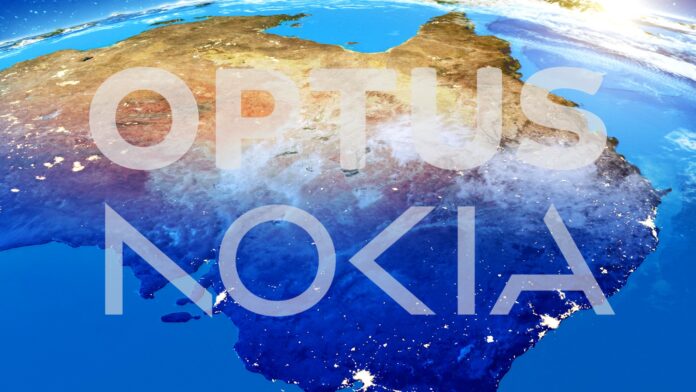Nokia said the new equipment will enable Optus to expand its 5G capacity in rural Australia
In sum – what you need to know:
Nokia upgrades Optus’s regional 5G network – Nokia will deploy its Habrok Massive MIMO radios and Levante baseband solutions to boost Optus’s 5G capacity and coverage in regional Australia, enabling faster speeds and better service quality.
New tech improves performance and energy efficiency – The Habrok radios deliver 33% more output power with lower energy use, while the Levante baseband cards cut energy consumption by 50%, helping Optus modernize sites sustainably.
Move supports RAN-sharing deal with TPG Telecom – The upgrade strengthens Optus’s position in its regional network-sharing partnership with TPG,
Finnish vendor Nokia will help strengthen Australian carrier Optus’s 5G network by upgrading sites in regional areas of Australia with advanced technology, the former said in a release.
Nokia noted that the upgrades will increase both network capacity and coverage, bringing faster speeds and better service quality to more communities and businesses across Australia.
As part of the partnership, Nokia will deploy its latest Habrok Massive MIMO radios and Levante baseband solutions from the AirScale portfolio. These tools are designed to handle growing data needs while using less energy. The upgrades follow Optus’s RAN-sharing agreement with TPG Telecom, announced last year, which aims to expand network reach and improve the overall experience for customers.
Nokia’s Habrok 32 Massive MIMO radios use the company’s ReefShark System-on-Chip (SoC) technology to deliver a 33% increase in output power. This helps Optus extend network coverage and support more users without increasing energy usage, according to Nokia. The radios are compact and easy to install, making them suitable for both new sites and modernizing older ones.
To improve energy efficiency, the radios include a feature called “Extreme Deep Sleep,” which shuts down unused parts of the radio when they’re not needed—cutting energy use without affecting performance. In addition, Nokia’s Levante baseband cards, which are AI-ready, will boost network performance while using up to 50% less energy compared to earlier models.
Kent Wu, Optus VP of access network strategy, planning and quality, said: “Our deployment with Nokia’s new Habrok massive MIMO radio and new Levante and Ponente baseband modules marks an important step in meeting the growing demand from our customers for enhanced connectivity in Australia’s regional areas. We know connectivity is vital for our customers so they can stream their favorite content, download TV shows and movies, or upload pictures and videos onto their favorite social media platforms. The Habrok 32 massive MIMO radios bring the right balance of performance and cost efficiency for upgrading our 5G network to elevate consumer experiences and drive business productivity. Through this partnership, we are expanding our reach for customers and bringing them high-speed, reliable connectivity to more customers, communities, and enterprises.”
Tommi Uitto, President of mobile networks at Nokia, added: “Our AirScale Massive MIMO radios and ultra-performance baseband solutions enable fast network modernization, providing a boost in 5G coverage and speeds for enhanced user experience while maximizing spectral efficiency. We are also helping Optus drive network sustainability through software innovations such as the extreme deep sleep energy-saving mode and the energy-saving capabilities enabled by Nokia’s ReefShark SoC chipset.”
In April 2024, TPG Telecom and Optus had entered a long-term network sharing deal. The operators will continue to operate their own core networks, they said, allowing them to each maintain network, security and resiliency control, as well as enable differentiation of service for their customers.
As part of the deal, the pair will establish a regional multi-operator core network. Optus will license some of its rival’s spectrum for use in the shared network, while TPG will gain access to Optus’ regional 4G and 5G networks. Specifically, TPG will be able to use 2,444 Optus sites in regional Australia, which according to the operator, doubles its national coverage and extends its 4G and 5G reach to 98.4% of the population. The deal will also significantly increase the number of regional mobile sites in the country.

